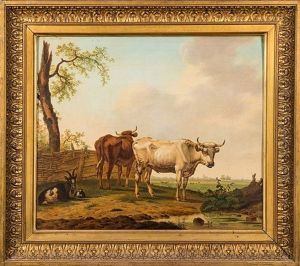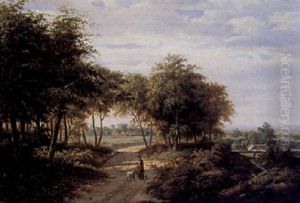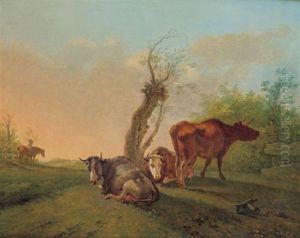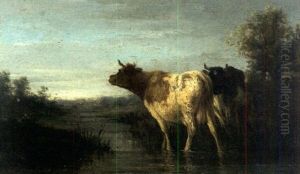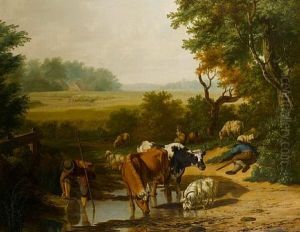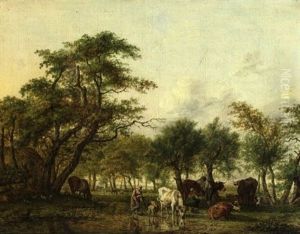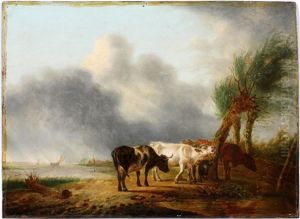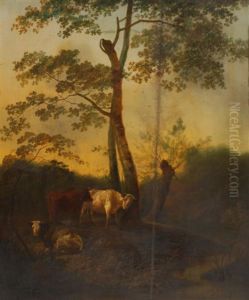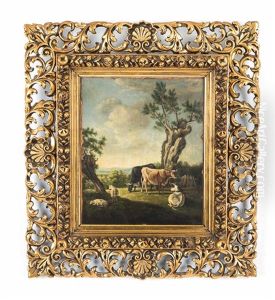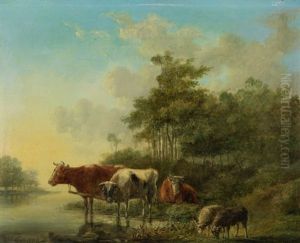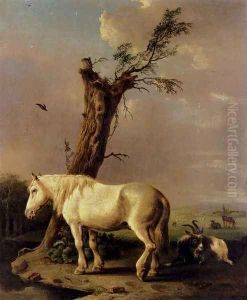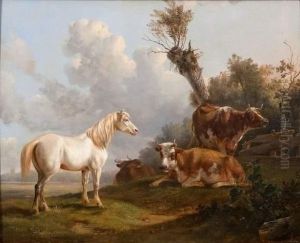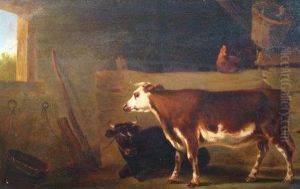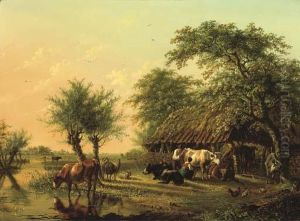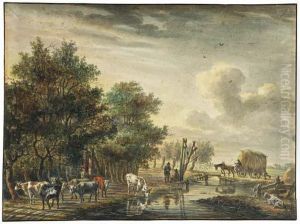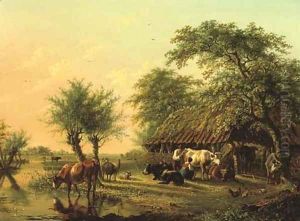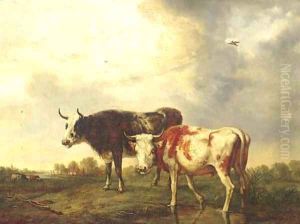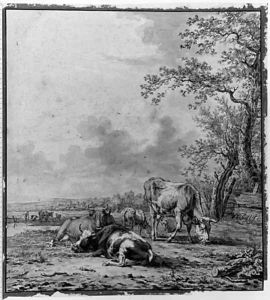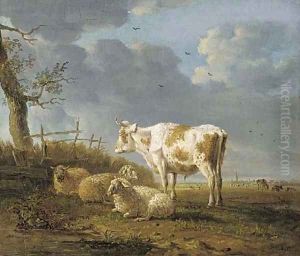Jan Kobell Paintings
Jan Kobell was a Dutch painter born in 1778 in Rotterdam, Netherlands, who specialized in landscape and animal painting, particularly pastoral scenes that often featured cattle. His works are characteristic of the Dutch Romantic period, echoing the tranquility and idyllic landscapes that became synonymous with Dutch art of the late 18th and early 19th centuries. Kobell came from a family with a strong artistic tradition; he was part of the second generation of Kobells who were involved in the arts, his father being a notable painter as well.
Kobell's early life was immersed in an environment that cherished art and craftsmanship, which naturally led him to develop a keen interest in painting. He initially trained under his father, before continuing his studies under other prominent artists of the time. This foundational period was crucial in developing his style, which later became distinguished for its detailed portrayal of nature and the serene harmony between animals and their surroundings.
Throughout his career, Kobell received acclaim for his ability to capture the subtle nuances of the natural world, a skill that made his paintings highly sought after. His landscapes were not just mere representations of the Dutch countryside; they were imbued with a sense of emotion and tranquility that reflected Kobell's own perceptions of nature. Despite the relatively short span of his career, Kobell's work had a significant impact on Dutch art, influencing the subsequent generation of landscape painters.
Jan Kobell's contribution to Dutch art is particularly notable for his detailed and sensitive approach to landscape and animal painting. Despite dying young at the age of 36 in 1814, Kobell left behind a legacy that continued to inspire Dutch landscape painting. His works are now preserved in several important art collections and museums, serving as a testament to his artistic vision and the beauty of the Dutch countryside that he so adeptly captured.
